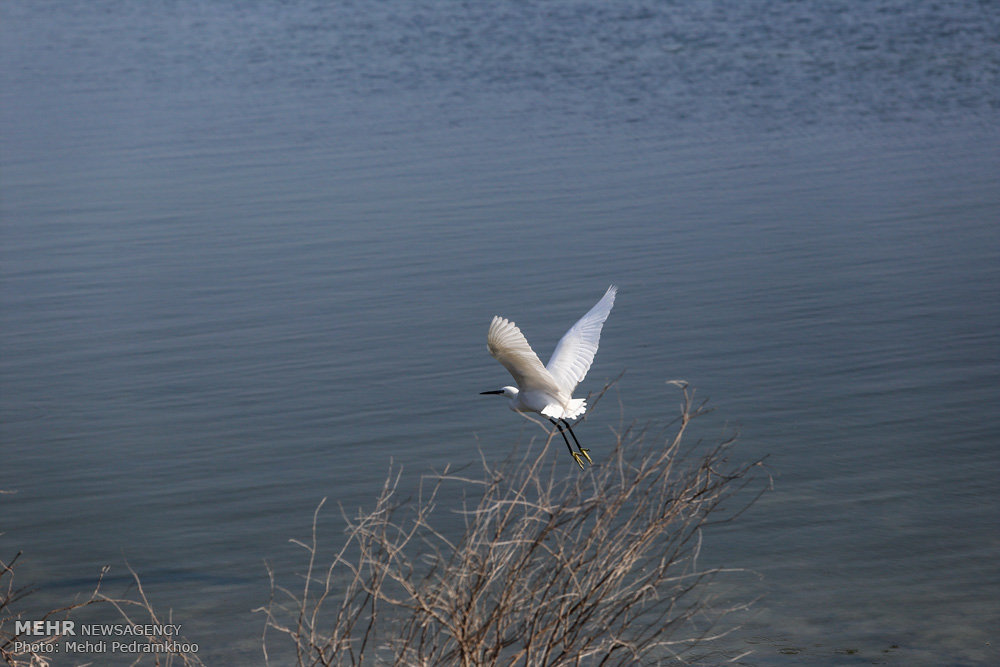Migratory birds wintering in Iran increased by 26.5%

TERHAN – The total population of migratory birds took flight to spend the cold season in the country increased by 26.5 percent last winter compared to a year earlier, head of aquatic animals and wildlife affairs at the Department of Environment (DOE) has said.
Annual census for migratory birds in Iran begins in the middle of the Iranian calendar month of Dey (December 22- January 20), and ends in middle of the month of Bahman (January 21- February 19), which will be a 1-month period since January 1 to 31.
Every year, from early-September to late-February, Iran hosts rare species of migratory birds heading from north to the southern countries due to reduced seasonal temperatures and food availability, Majid Kharrazian-Moqaddam said.
He went on to note that with increased rainfall averages and accordingly with wetlands being filled with water, bird migration reaches its peak, and the number of aquatic birds and animals observed and recorded during the migration season in the country have grown substantially.
According to the census conducted during winter in the aforesaid period in Iranian calendar year 1396 (March 2017- March 2018), some 914,914 migratory birds of 161 species have been located in 483 sites across the country, which demonstrates a 26.5 percent rise compared to the same period a year earlier (March 2016- March 2017), he noted.
With increased rainfall averages and accordingly with wetlands being filled with water, bird migration reaches its peak, and the number of aquatic birds and animals observed and recorded during the migration season in the country have grown substantially.Among the various groups of migratory birds wintering in Iran, the largest population belongs to the group of geese, swans and ducks amounting to 781,499 and the smallest population of 7 are the long-tailed ducks or oldsquaw, he added.
Provinces of Mazandaran and Golestan hosting a population of 699,130 and 356,181 migratory birds respectively, are the first provinces with the highest sufficient resources, as movement of migratory birds is closely linked to seasonal availability of resources, he stated.
Moreover, the province with the highest diversity of aquatic and migratory aquatic birds, is Gilan province having 85 different species, he also added.
Elsewhere in his remarks, Kharrazian-Moqaddam said that the population growth rate of wintering birds, the population of oldsquaws and rails have the highest growth rates, while the flamingoes and pelicans showed the lowest growth rates of 26 and 27.9 respectively due to the severe water shortage the wetlands are facing, he further lamented.
Migratory birds on the International Union for Conservation of Nature (IUCN) Red List have also headed to the country last year with an enhancing population of 17.4 percent compared to past two years, the highest number of which was common pochard and the two species of Siberian crane and red-breasted goose had the lowest proportion, he explained.
Earlier this month, Mehr reported that the number of migratory birds has increased in Hour al-Azim wetland, located in southwestern province of Khuzestan on the border of Iran and Iraq, due to recent above-normal rainfalls and good conditions.
Additionally, deputy director of Khuzestan province’s environment department general announced that Bamdej Wetland in Khuzestan province, suffering a significant drop in water level during summer, has been filled with water after autumn rainfalls, which led to an increase in the number of migratory birds choosing the wetland to pass the winter on.
Also, deputy director for the provincial DOE Zaman Ahmadi on early December said that in the current season compared to past few years, the number of migratory birds has increased in Miankaleh wetland due to the appropriate nutritional conditions.
As per the data published by National Drought Warning and Monitoring Center it seems that recent above normal rainfalls and the increase in the precipitation levels has played a key role in improving the wetlands conditions nationwide which will surely effect the migratory birds’ population even more this year.
Last year during winter, the whole country received 29.6 millimeters of rain while this year the amount almost quadrupled amounting to 92.3 millimeters.
FB/MQ
